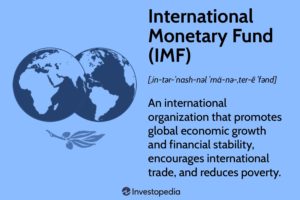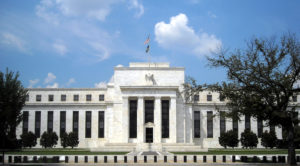Last Thursday I was invited to present some thoughts about the impact of rising of interest rates to the weekly KEI Webinar. The recording can be found here.
There was an engaging conversation afterwards which touched on the recent banking crisis, crypto-currencies, government deficits, prospects for a global recession, performance of central banks particularly the U.S. Federal Reserve, and the future of the U.S. dollar as a reserve currency. Some humour was intended to be inserted with a showing of the famous Two Johns- Bird and Fortune on the Subprme Crisis
The following text are speaking notes which were loosely followed. All date is from the Federal Reserve Board website.
“Well thank you Perry for inviting me to provide some commentary around the impact of rising interest rates. I am not going to be providing any investment advice today so do not go and call your broker after you listen to me.

This is this afternoon’s agenda. First we’ll start off with some highlights from the recent IMF report prepared after the U.S. regional banks followed by a little comic relief courtesy of the ‘two Johns,’ an English duo who will talk about the fundamental dynamics of the financial system in light of the global financial crisis. Next, we’ll look at the role of central banks and their tools followed by a chart on the Federal Reserve interest rate history going back before the financial crisis.
I then turn to the probable effects on borrowers and the global economy which face this rapidly rising interest rates. I then offer some preliminary conclusions.
I caution my perspective is high level and relies mostly on the official data of the Federal Reserve. I use Fed data since the U.S. central bank is the de facto global central bank given the U.S. dollar’s central place in the world’s trading and financial system. As a political scientist and student of financial institution policy and public finance, I have some qualifications to address this topic, but I caution that the complexity of both the legal and technological changes can be overwhelming. ![]()
With the failure of the Silicon Valley Bank, Signature Bank and pressure on the First Republican Bank in the Silicon Valley area, finance ministers and central bankers met in Washington recently at their semi annual meeting of the International Monetary Fund. At these events they review the financial stability report which is produced by the staff at the IMF. In the first quote from the Executive Summary of the report they note the challenges caused by rising interest rates and the implications on the stability of the financial system. The word “vulnerability” Is code for underlying symptoms in the system which central banks and treasury departments in the world are trying to get a handle on.
The second quote emphasizes questions concerning the quality of supervision of the banking system. Country- is code for criticism of the U.S. regulators, including the Fed and Federal Deposit Insurance

Corporation. In the Canadian context I have more comfort that our Superintendent of Financial Institutions is taking seriously both the need for capital- what area called stability buffers as well as making changes to mortgage rules. In addition, Switzerland’s banking supervision was characterized by forbearance of the troubles at Credit Suisse which originated during the global financial crisis.
Now give me a moment to set up the comedy duo…
The importance of of central banks in our modern economy stands from the critical role and tools that they are given by governments to in a sense stabilize economic conditions and ensure generally a stable financial system. From the Bank of England’s website their role is defined as providing secure bank notes that is paper currency that can be trusted. Second the stable prices mandate is central and has become a salient issue of course in the past couple years. Three -safe and sound banks -and resilient financial system. This means central bank is also concerned with other large financial institutions such as insurance companies, pension funds and securities dealers.
The role of bank supervision may be undertaken by the central bank or by a separate supervisory organization, which is the case in Canada. Central banks though are deeply involved in conversations relating to the stability of the whole financial system. And then finally the whole mandate to look at economy and employment.
How do they accomplish their mandate? First there is the supervision function. Secondly if financial institutions are faced with liquidity squeeze, as distinct from insolvency, central banks can lend freely to the impugned bank upon pledging of high-quality collateral to stave off a bank run. Raising or lowering interest rates comes from the central bank is their ability to buy and sell government securities which affect the price of the securities and hence the interest rate.
Four, one area you don’t really hear mentioned is the tradition of moral suasion which is where the central bank governor call in commercial banks and tell them or persuade them to do certain actions without taking open market operations or other supervisory actions. An example could be about commercial lending has been viewed as too two lax or risky and regulated banks need to tighten their credit policies. Finally. new tools have come in since the global financial crisis. Known as quantitative easing or QE or quantitative tightening this is where the central bank buying securities of all kinds from the banking system to provide liquidity.
The next slide tells the story of the Fed’s mandate. It is termed a dual mandate which recognizes the Fed’s role to balance employment- maximum employment- and stable prices with the mysterious modifier of “moderate long-term interest rates.” Thus, in terms of understanding interest rate movements there is a delicate balancing act.
This chart shows the overnight interest rate at the Federal Reserve -I’m using the 30-day commercial paper rate- from 1997 through to April 2023 and you can see with this scale the enormous drop in interest rates that took place in the period from 2000 in response the NASDAQ meltdown to 2005. In response to an overheating economy, interest rates rose from 1 per cent to 5.25 per cent in a very short period of time. Over the financial crisis- Lehman Brothers happened in September 2008-there was a very rapid, and historic drop in interest rate to historic lows of near zero per cent. By analogy, this emergency response – quantitative easing- is like what is brought out for heart attacks- a financial “defibrillator.” This produced an enormous expansion of the Fed’s balance sheet which went from the hundreds of billions into the trillions.
This easy money policy carried on for nearly a decade and as economic conditions, manifested by historically low unemployment rates, eventually caused interest rates rose- and quantitative tightening through balance sheet downsizing saw rates rise from zero to 2.5 per cent- Next COVID caused central banks to open the spigots back to near zero interest rates and now once again with both employment levels strong but with inflation raising rapidly the Fed has moved again to move from zero per cent to now five per cent or what might be considered a more normal level.
Obviously these are dramatic changes in very short periods of time. These changes transmit to the system immediately in the case of floating rate loans which are common for commercial borrowers and over time for term mortgage and other loans. This also have impact for holders of debt instruments- bonds, for example, whose market values can fall dramatically as current market rates rise.
My next slide looks at consumer debt service ratios from 1980 to the present. Debt service ratios went to very high levels at the height of the global financial crisis. With interest rates going to zero for a prolonged time the debt service ratio fell dramatically. The ratio levelled off until COVID led to another period of zero interest rates. And now we see the debt service ratio has gone from about 8.5 per cent which has come back to nearly ten per cent. These are very dramatic moves in a very short time. Bottom line- there will be rising loan loss provisions on individual and corporate loans.
The next slide is the amount of commercial paper outstanding through in the United States from 2007 to today. The volumes of 1-4 day CP reflect the general demand for funding by companies. In a sense this is a measure of the heartbeat of the corporate economy. At the current time there does not yet appear to be restrictions in commercial credit.
This slide is annual growth rates in commercial loans, calculated quarterly – more recent data shows a slowing in commercial credit creation slowing down.
The final slide shows the quarter to quarter growth in residential and commercial real estate loans from 2007 to today. Note the decline in borrowing after the financial crisis and the uptick during COVID. I expect to see continued declines in the rate of growth and perhaps absolute declines in the amounts outstanding. A key metric for bankers and their supervisors are loans going into arrears.
The ultimate impact of rising rates is anyone’s guess. Perennial bear David Rosenberg cites multiple historical data showing a recession is inevitable. At present the markets are anticipating another quarter percentage point rise. Key areas to watch is the impact of rising rates on commercial and residential mortgages and property values.
From all this I draw some preliminary conclusions or lessons. Social media and transmission of information about the flagging fortunes of the Silicon Valley bank accelerated its demise. Second, since the global financial crisis and then the monetary response to COVID, trillions of dollars have been pumped into the financial system by central banks. These trillions have been leveraged by private institutions. Near zero interest rates have forced institutional investors to search for higher yields thereby increasing risks for the whole financial system. Finally, as the IMF noted in its recent financial system report bank supervision has revealed gaps- particularly in the United States and Switzerland.”